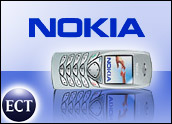
Mobile device maker Nokia has struck a deal to license Macromedia’s Flash technology for use on smartphones, a partnership that could help accelerate the adoption of portable Web use and mobile commerce over time.
The agreement is seen as significant because it will give thousands of Web application developers new tools for building programs that are designed specifically to work on Web-enabled mobile devices. With Flash, devices can display Web pages that have animation, such as maps and weather graphics and simple games.
Desktop-Friendly
Currently, many hand-held devices bog down when accessing Web pages built for viewing on desktop browsers. For instance, some Nokia hand-helds have a version of Flash in the Opera browser they come equipped with. However, that is a desktop-friendly version of the application that sometimes translates poorly to mobile devices.
Financial terms of the Nokia Flash deal were not disclosed. The agreement is focused heavily on Nokia’s wildly popular Series 60 line of hand-held devices. One of the most widely used smartphones on the market, the Series 60 line uses the Symbian operating system and is licensed to a half-dozen other device makers.
Finland-based Nokia also will support Flash in other product lines and will work with San Francisco, California-based Macromedia to deliver development tools to mobile carriers. No specific time frames were given for when Flash-enabled devices would be rolled out.
Pushing the Envelope
Nokia Vice President of Mobile Software Antti Vasara said the deal will enable Flash developers to “build new compelling applications on Series 60,” and enable mobile network operators to “create cutting-edge mobile content.”
Macromedia General Manager Al Ramadan said the deal would unlock “a new generation of digital experiences to an even broader section of the mobile ecosystem.”
Perhaps because of its strong market position in the booming smartphone arena, Nokia has been among the most aggressive among all hand-held device makers in pushing to bring the mobile Web and other features to user’s hands.
Nokia is also said to be working on handsets that will receive wireless television feeds and earlier this week announced a partnership with RealNetworks to expand the use of that company’s media playing software on its devices.
Era of Smartphone
The push is not limited to Nokia. Earlier this month, Symbian announced the latest version of its mobile platform, saying that OS9 would focus heavily on multimedia, with elements such as enhanced support for 3D graphics, graphics acceleration and better handling of digital images.
“We are in the era of the smartphone. The only question is how fast things are going to evolve,” Gartner research Vice President Ken Dulaney told the E-Commerce Times.
Smartphones are already outselling stand-alone PDAs as the market adjusts to changing demands from both consumer and business users, Dulaney noted.
Missing Ingredients
Hand-held makers are eager to push the arrival of mobile-commerce and streaming media because it will boost demand for higher-end, more profitable devices, Dulaney added. Carriers are eager to see the market nurtured to maturity as well, since it represents a massive opportunity for premium services that could substantially boost monthly revenue from each phone user.
Analysts say that hand-held devices built to handle specially designed Web pages and content customized for the Web are two key ingredients to mobile Web and mobile commerce adoption. However, a third ingredient might not be in place yet.
“As networks get faster, these types of services will become much more in demand than they are today,” IDC analyst David Linsalata said. “Having more robust networks is a major piece in all this.”






















































Social Media
See all Social Media